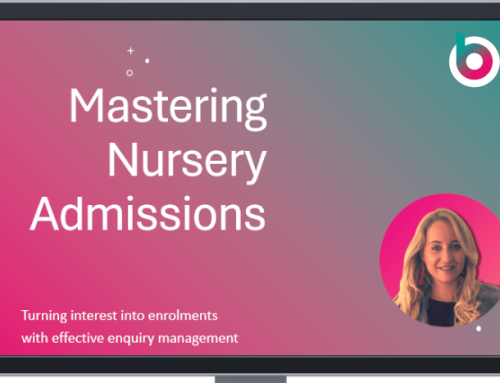Your little one is starting nursery. It’s a big day! Even though nursery practitioners have started countless children on their nursery journey, trusting unfamiliar people with your child is daunting. On your child’s first day at nursery, you’ll likely be more nervous than they are.
The last thing you’ll need on the day is a frantic panic wondering if you’ve included everything they need and might want during their session. Worry not: help is here. We share our ultimate starting nursery checklist for parents, covering everything from preparing for nursery to ‘nice to haves’ in their backpacks.
Since 2016, we have provided nursery managers with management software that makes their jobs easier and improves your experience as a parent. Blossom was created and developed by current nursery owners and managers. All of which is to say, we understand just how important the first day of nursery is.
How to prepare for nursery
All children who start nursery for the first time have a different journey. Some children take a little time to come out of their shells, while others enter the nursery like confident tornados. Either way, there are a few steps you can take before the first day at nursery.
- Talk about nursery
- Visit the nursery
- Spend time apart
- Build communication skills
- Talk about the nursery
Books and videos are available to read to your child about starting nursery. Although you may not know how much they take in from the story, it can be a useful strategy to try.
When they are ready to leave nursery, reading them a story about the transition to primary school can help them settle in quickly. But let’s get the first day out of the way first, right?
Visit the nursery beforehand. You’ll likely be offered stay-and-play sessions at the nursery. This is a great chance for you and your child to visit the nursery rooms together.
Each nursery operates its settling-in sessions differently. They are professionals at ensuring a smooth transition. Be mindful that processes can change over the years, so if your eldest went there, don’t assume the process is still the same.
Spend time apart
Your child may be away from you for large chunks of the day. Introducing time apart before they begin nursery sessions can help ease the transition into half or full days at the nursery.
Consider having a trusted family member look after them while you go to the shops or for a walk around the block. These short spells of time apart can help make the separation a positive one (for you both).

Build communication skills
One of the biggest fears for parents of nursery-aged children revolves around communication. You and your family are fluent in their babble. So, if your child is not yet speaking, there are understandable worries that unfamiliar people may not know what they are asking for.
Lots of parents (and nursery settings) teach their children basic sign language, known as Makaton. You can find a whole host of one-word signs that your child can use to ask for help, say they need the toilet, water, or a snack. Have a gander at some of the communication and language activities your child’s keyworker will play with them.
Emergency contact details
For you and any immediate family members should they need to answer the child’s medication questions or to collect them if they become poorly.

Medical Information
If your child has allergies or intolerances, the nursery should know before the first day. Medication to be administered throughout the nursery day should be handed to the nursery team at drop-off. Avoid leaving any medication (even teething gel) in their backpack.
Your child will have an online Child Profile (if your nursery is a Blossom customer). This is a digital all-about-me profile to complete and amend when necessary.
We all know how quickly a toddler’s likes and dislikes can change, so sharing these nuggets of information alongside the important medical details helps practitioners get to know your child really well.
Content
Written by
Share
Learn more

















